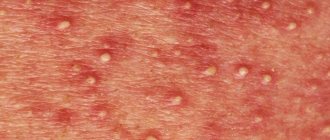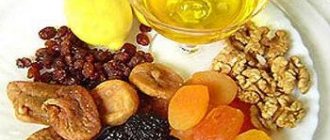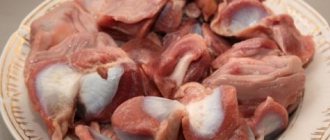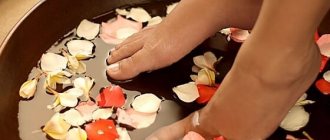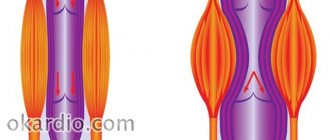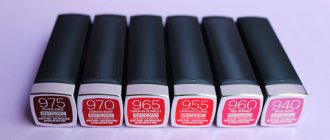Why does the vein in my leg burn?
It is difficult to answer the question why a vein in the leg burns if you do not know the person’s anamnesis (life history and illness). Therefore, before the doctor begins instrumental studies, he is sure to ask whether there were any prerequisites for the development of such a complaint as a burning vein in the leg.
The following may be considered prerequisites:
- Varicose veins in close relatives;
- Complaints of pain, heaviness and fatigue in the legs, which manifest themselves especially clearly in the evening and after static load;
- Green veins on legs;
- History of vein blockage;
- Spider veins on the skin of the legs.
If a person has the above symptoms, then it is highly likely that he suffers from varicose veins of the lower extremities. If there is a symptom such as a burning vein in the leg, the doctor may assume the development of complications of varicose veins: thrombophlebitis and deep vessel thrombosis.
These dangerous conditions develop when a blood clot forms in the lumen of blood vessels. The difference between them is where exactly the thrombus is localized: if in the superficial venous system it is thrombophlebitis, in the deep venous system it is thrombosis.
Remove the “web”
If a pattern of numerous thin vessels appears through the skin, forming a cobweb on it, then this does not pose any harm to health, much less life. But the defect is harmful to the appearance. Fortunately, there is a way out - microsclerotherapy. This is the gold standard of aesthetic phlebology. The drug is injected into the smallest veins and spider veins. The cosmetic result is achieved after 1.5–2 months, and no scars or burns remain on the skin.
Percutaneous laser coagulation of telangiectasias (small capillaries) is an excellent solution if you need to remove very tiny vessels, the diameter of which does not allow microsclerotherapy. In aesthetic medicine, this method is considered the most effective and safe. Its essence is that the laser beam, passing through the skin and the vascular wall, is absorbed by the hemoglobin of the blood filling the capillary. In this case, heat is generated inside the vessel, which damages the wall of the vessel. It spasms, and subsequently connective tissue appears in this place. The procedure uses modern selective lasers, whose energy is absorbed primarily by the blood. This minimizes the possibility of burns. A series of several procedures allows you to remove blood vessels from a fairly large area and get a good cosmetic effect.
Who should you turn to when a vein in your leg burns?
Thrombophlebitis and deep vein thrombosis require immediate medical attention. Moreover, the sooner qualified assistance is provided, the higher the chance that only conservative therapy will be required. Therefore, if you feel that a vein in your leg is burning and in addition to this, the symptoms described below appear, then immediately consult a phlebologist.
- Redness of the leg, especially pronounced along the location of the vessel;
- Local increase in skin temperature of the leg;
- Sharp or nagging pain in the leg that prevents you from walking independently;
- Severe swelling of the leg.
Angiologists and phlebologists use blood-thinning drugs—anticoagulants and antiplatelet agents—to treat these complications of varicose veins.
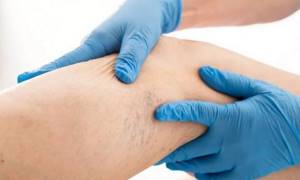
The “welder” business is afraid
Thermal obliteration methods (laser or radiofrequency obliteration of dilated veins) are more powerful than sclerotherapy, but they are also not a full-fledged operation and do not require incisions and general anesthesia. This treatment is carried out under local or regional anesthesia. A thin light guide or radiofrequency catheter is installed into the vein under ultrasound guidance (in one case it is connected to a laser device, in the other – to an RF energy generator). The blood absorbs high radiation energy and instantly boils. The high temperature “welds” the entire thickness of the varicose vein wall, thereby eliminating the need to remove it. Over time, the vein is replaced by connective tissue and ceases to function (not only others, but even ultrasound ceases to notice it).
However, for very large venous nodes, there is only one way out - surgery (safenectomy), in which the surgeon, under spinal anesthesia, using a special probe, will remove all dilated veins. The use of microsurgical instruments will eliminate the need for large incisions.
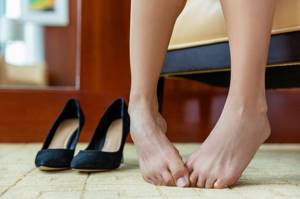
The ball is at your feet. How to help tired feet and why it is important to do so Read more
A vein burning in the leg: is it dangerous?
In order to determine why the vessel on the leg is burning, a phlebologist needs additional examination. The doctor, after performing Dopplerography of the vessels of the legs (it allows you to evaluate blood flow), confirms or rejects the diagnosis of thrombophlebitis and thrombosis.
If there is a thrombus in the lumen of the vessel, it will be visible on the monitor screen. It is important to determine the exact location of the thrombus. The risk of a blood clot breaking off from the vessel wall and blocking one of the vessels depends on this.
When a blood clot enters the pulmonary artery, pulmonary embolism develops. PE is a potentially life-threatening condition, since when blood circulation in the lungs is blocked, the entire body experiences oxygen starvation.
Start small
In the early stages, it is better to use sclerotherapy. The procedure is performed on an outpatient basis. In some cases - under the control of an ultrasound scanner (then called “echosclerotherapy”).
The essence of the method is to inject special substances into the vein with a thin needle, which “seal” the enlarged area. As a result, the vein becomes sclerotic, that is, replaced by connective tissue, and blood flow through it stops.
Sclerotherapy is quick and almost painless, since the doctor uses the thinnest, specially sharpened needles. And the result appears almost immediately. And what’s really great is that not only dilated blood vessels disappear, but also pain, swelling, cramps, and increased fatigue of the legs. An important point: after sclerotherapy, you need to wear compression stockings (to tightly compress the veins).
Microfoam sclerotherapy differs from the classical method in that the drug for gluing veins is first converted into fine foam, mixing the medicine with air or carbon dioxide, and only then injected into the vessel. In this way, you can close not only small, but also quite large veins, and also reduce the amount of the drug administered.

There is no truth in the legs. Why have varicose veins become “younger”? More details
How to avoid conditions when a vein in the leg burns?
In order to avoid the sensation of a burning vein, you should follow the prevention of varicose veins of the lower extremities, which includes an active lifestyle, giving up bad habits and regular visits to a phlebologist. This is especially important for people at risk:
- For patients in the postoperative period (no matter what kind of operation was performed), it is not necessary to remain in bed for a long time. As soon as your doctor says you can walk, be sure to move. Immobilization leads to poor circulation and increases the risk of developing a blood clot in the veins.
- According to statistics, a huge number of women experience venous thrombosis and even thromboembolism during pregnancy. Pregnant women are advised to walk a lot in the fresh air, eat right and watch the kilograms they gain. It is advisable that your weight during pregnancy does not increase by more than 12 kg.
Do not ignore the appearance of pain and other symptoms of varicose veins. If treatment is started in a timely manner, thrombophlebitis and deep vein thrombosis do not occur.
How to prevent varicose veins:
- Move more. Movement makes blood circulate more actively. Do not use the elevator, take the stairs and escalators on foot. Swim.
- Give your legs a rest. If you are tired, lie down with your legs elevated (15–20 cm above heart level). It is good for your legs to be slightly elevated while sleeping. Even while standing or sitting, periodically shift from foot to foot, roll from toes to heels. And forget about the cross-legged sitting position.
- Avoid tight clothing (skinny jeans, tight skirts, socks with tight elastic bands). They impair blood circulation.
- Wear shoes with low heels. High heels and ballet shoes - only occasionally.
- Don't overeat. Eat less fatty refined foods, more fiber (vegetables, herbs, fruits, cereals, grain bread, wholemeal pasta). This diet will protect against chronic constipation, which causes varicose veins.
- Maintain drinking regime. If less than 1.5–2 liters of fluid enters the body per day, the blood becomes viscous and the veins have difficulty moving it.
- Lose weight. Extra pounds are an extra burden on the blood vessels of the legs.
- Be careful with oral contraceptives. Taking them can provoke the rapid development of varicose veins. When taking COCs, be sure to visit a phlebologist every six months.
- Temper yourself and avoid prolonged overheating. Contrast water procedures strengthen blood vessels. The bathhouse is not prohibited, but it is necessary to reduce the time spent in the steam room, do not sit on the top shelf, it is better to wrap your feet in a towel, and immediately pour cool water on them upon leaving the steam room.
Traditional methods
Let's move on to traditional methods of treating varicose veins under the knee.
- One of the easiest and most accessible remedies is the common potato. The method of application is quite simple. Take a couple of small potato tubers, three or four are enough. Grind them, you can simply grate them. Apply the resulting mixture to the sore spot and bandage it with polyethylene. Leave for a couple of hours. With frequent use, good results are achieved. The nagging pain stops, and over time the veins retract and become less noticeable.
- Next, you should give preference to apple cider vinegar, which is no less effective in fighting the disease. To achieve the goal, it is enough to rub your feet with vinegar for a month. In addition to this treatment, you can take apple cider vinegar orally: a teaspoon per glass of water. Important! Vinegar can be harmful if not used as prescribed!
- Another equally effective remedy in the fight against varicose veins is garlic ointment. Let's take regular white garlic. Let's crush it. Add butter to this mixture in a ratio of 1:2. Apply to the required areas, apply a polyethylene bandage and leave for a while. It is advisable to wrap the bandage with a warm scarf and leave it overnight. In the morning, rinse with warm water (not hot).
- Apply wormwood gruel mixed with sour milk to areas of varicose veins. For hygiene, you can apply the mixture to gauze or polyethylene and wrap the affected areas. Just like in the previous recipe, leave the compress overnight. In the morning we wash it off. For effect, we carry out the procedure for 5 days in a row, then take a break for several days, and again carry out the treatment in this way.
- When varicose veins under the knee are very strong, one might say baggy, in this case simple tomatoes will come to the rescue. Apply tomato pieces and prepare a dressing. In this case, treatment is very long, up to six months. But this is your health, and the time factor should not affect your determination!
My patients used a proven remedy that allows them to get rid of varicose veins in 2 weeks without much effort.
There are contraindications. Consult your doctor.


